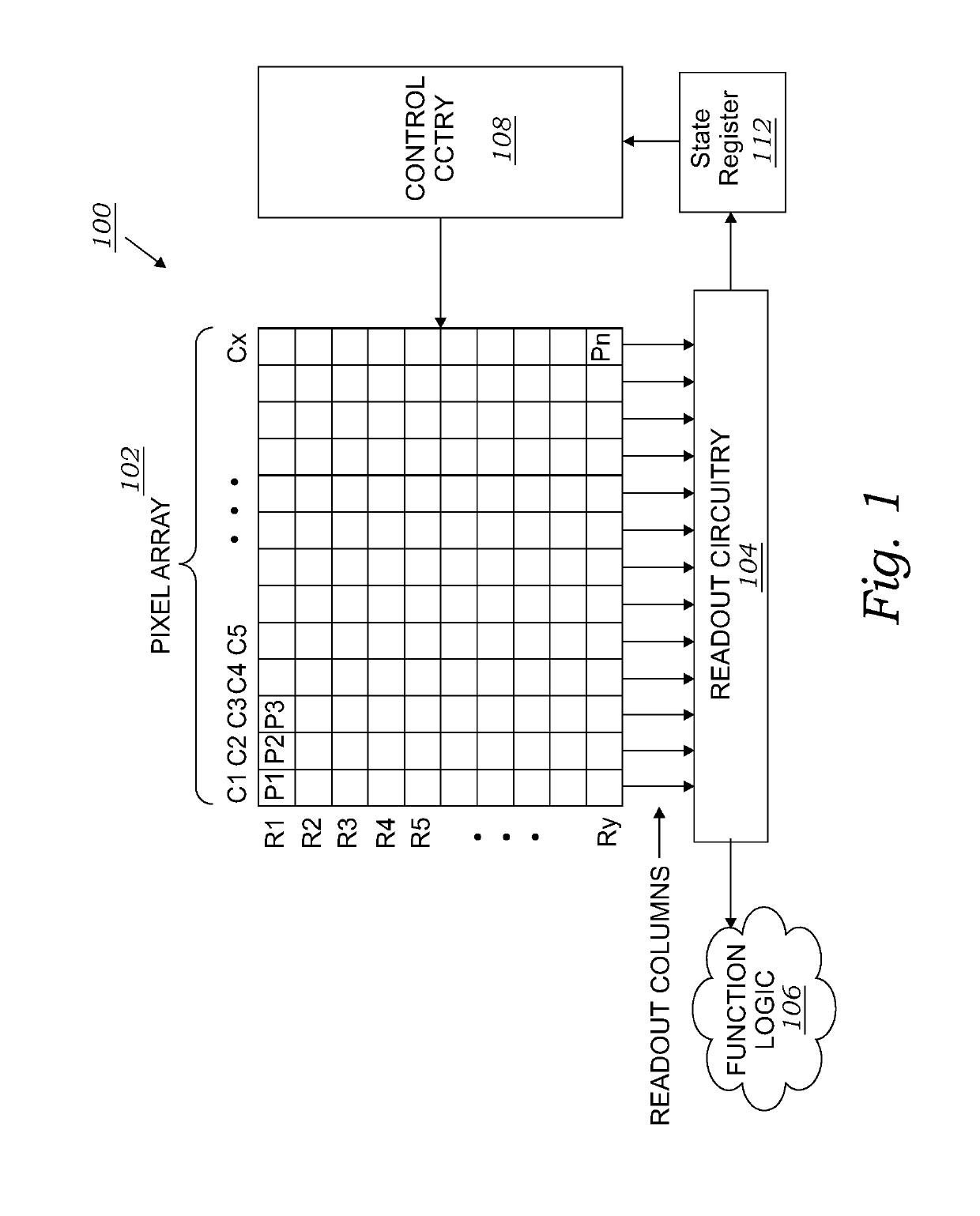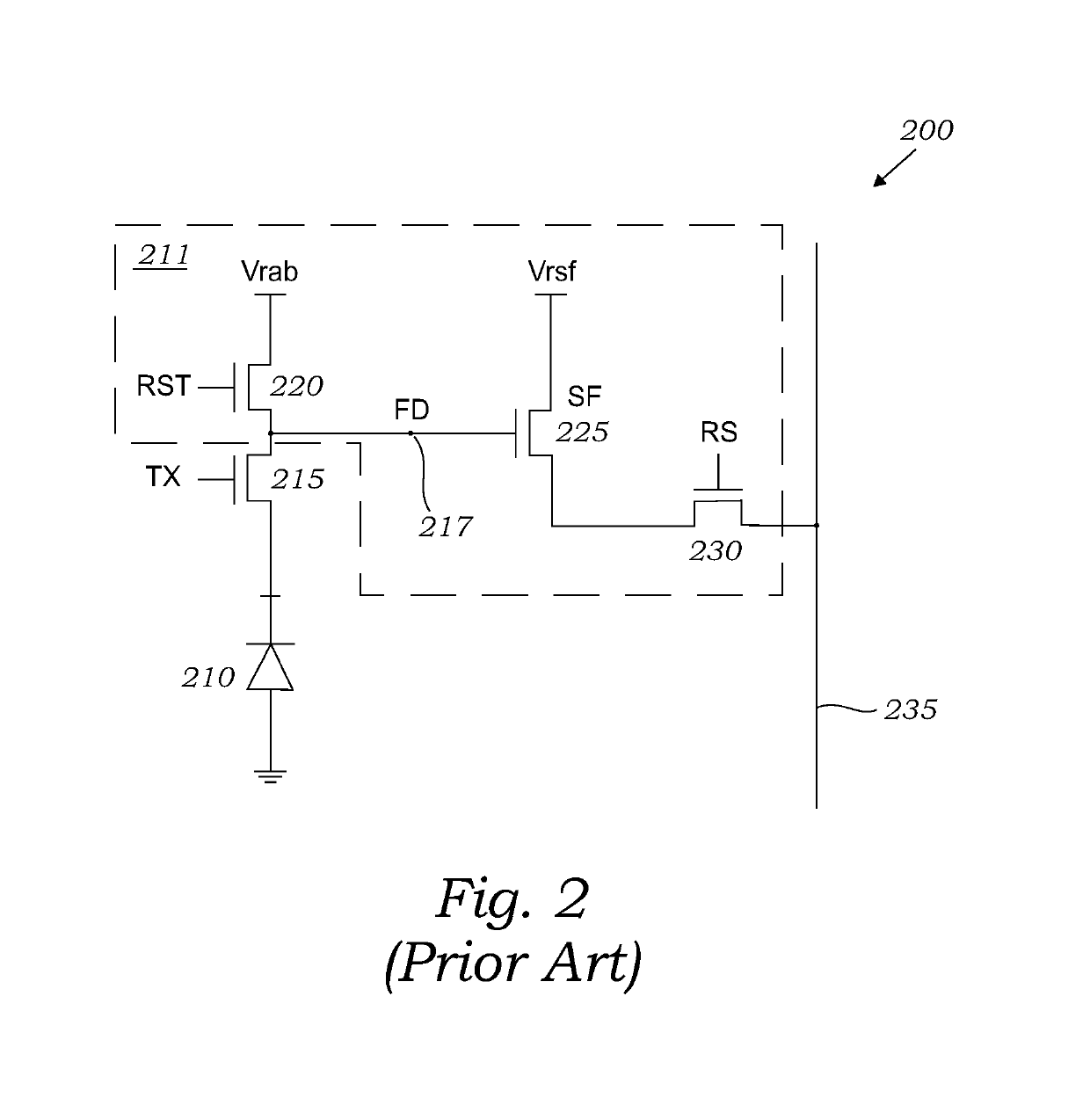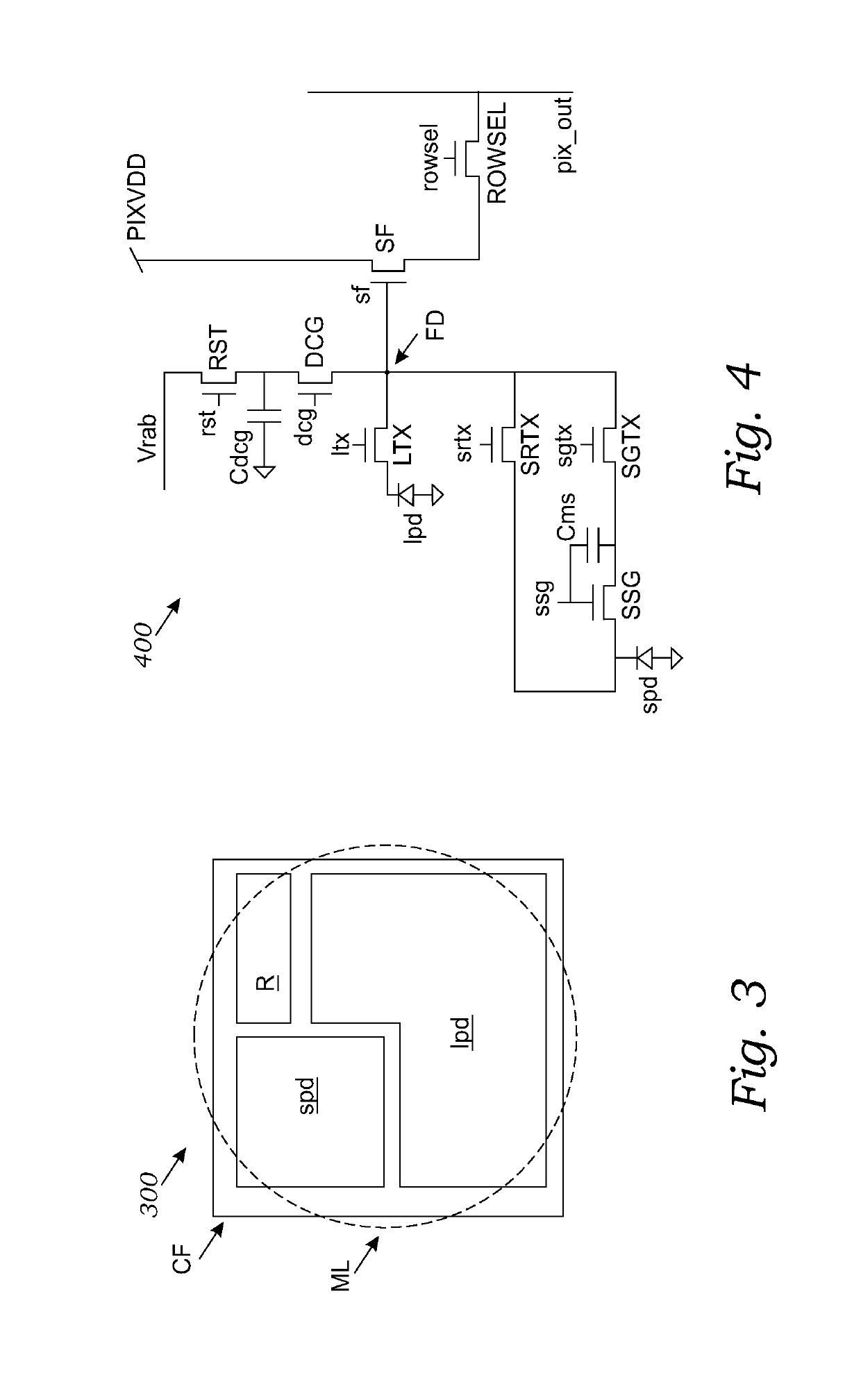Wide dynamic range image sensor pixel cell
- Summary
- Abstract
- Description
- Claims
- Application Information
AI Technical Summary
Benefits of technology
Problems solved by technology
Method used
Image
Examples
first embodiment
[0039]In summary, as a result of the described circuit diagram of FIG. 4 and the described control signal timing diagram of the invention four separate signals and their respective reference levels are generated and readout for each pixel cell leading to a widening of the dynamic range of the resultant signal representing the illumination incident upon the dual photodiode pixel. An advantage of the invented pixel cell is that the dual conversion gain components are shared by the large and small photodiodes rather than constrained to have separate dual conversion gain components assigned to each photodiode. The read out methods illustrated in FIG. 5 would be more commonly be used in a row by row rolling shutter readout method for both the large and small photodiodes but the presence of storage elements Cms and SGTX it is to be understood that in another embodiment of the invention the small photodiode may be exposed and read out in a global shutter mode while the large photodiode is ...
second embodiment
[0041]FIG. 6 is an electrical schematic diagram of a pixel cell in accordance with the invention. FIG. 6 illustrates pixel cell 600 comprising the same signal dynamic range enhancing features shown in FIG. 4 but with an alternative connection scheme. The pixel cell electrical schematic illustrated in FIG. 6 is the same as the one shown in FIG. 4 with the exception that transistor SRTX connects small photodiode spd to node D, the node between dynamic enhancement capacitor Cdcg and capacitor control transistor DCG, rather than at the node between transistor DCG and floating drain FD. A control timing diagram similar to FIG. 5 can be used to read out imaging signals providing enhanced dynamic range.
[0042]Further embodiments of the invention may be realized by the choice of fabrication method for capacitors Cdcg and Cms. These capacitors may be fabricated as metal-insulator-metal (MIM) capacitors, metal-oxide-metal (MOM) capacitors or metal-oxide-silicon (MOS) capacitors. There are also...
PUM
 Login to View More
Login to View More Abstract
Description
Claims
Application Information
 Login to View More
Login to View More - R&D
- Intellectual Property
- Life Sciences
- Materials
- Tech Scout
- Unparalleled Data Quality
- Higher Quality Content
- 60% Fewer Hallucinations
Browse by: Latest US Patents, China's latest patents, Technical Efficacy Thesaurus, Application Domain, Technology Topic, Popular Technical Reports.
© 2025 PatSnap. All rights reserved.Legal|Privacy policy|Modern Slavery Act Transparency Statement|Sitemap|About US| Contact US: help@patsnap.com



